Going Up Yellow Mountain
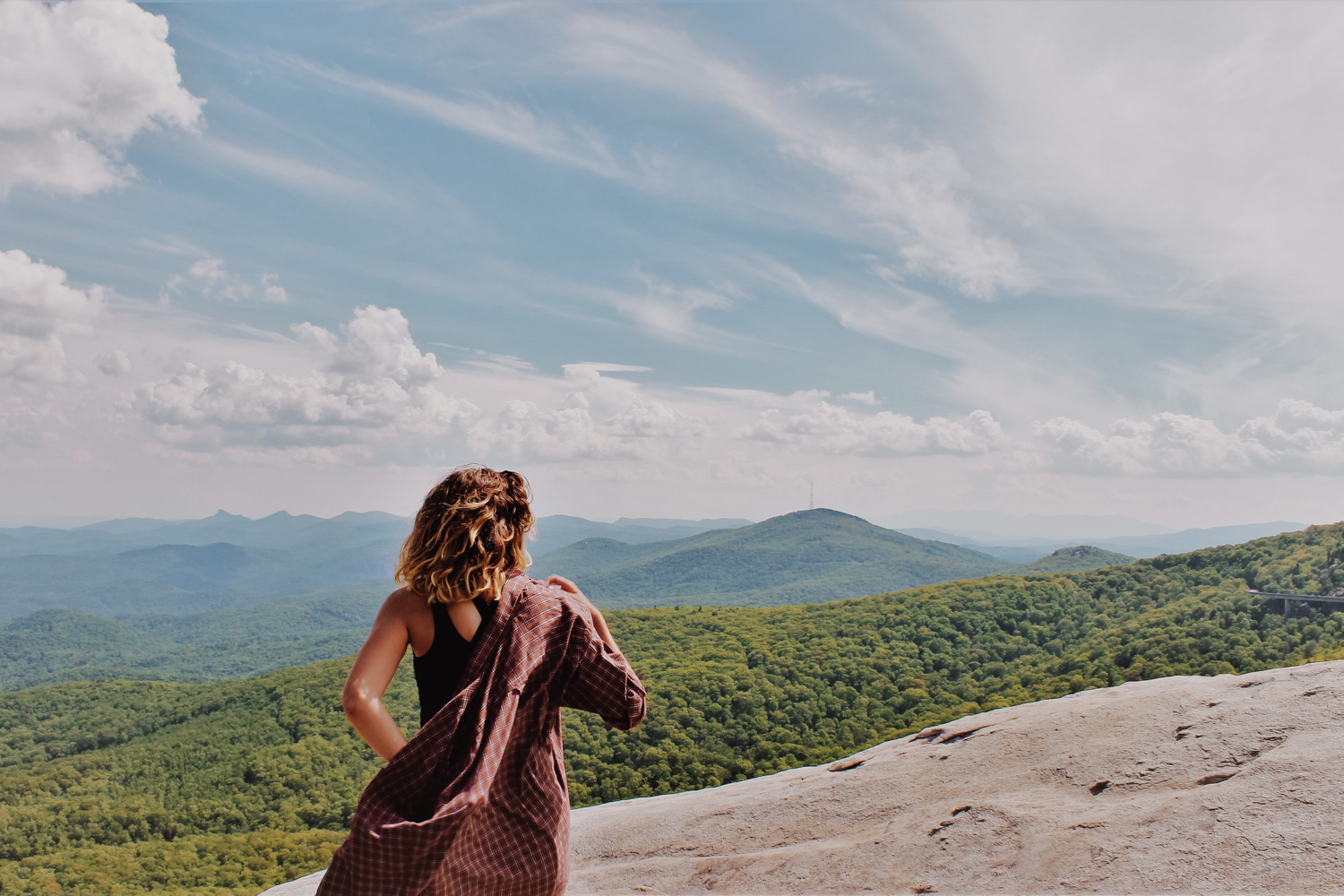
Going Up Yellow Mountain
An ode to retracing the paths of our pasts, running through recovery from Covid-19, and forging into the uncertainty of journeys ahead.
By Jessie Lynn Wall
An unkept gravel highway skirts the Old Toe River’s banks in Avery County, North Carolina. Twisting and curving through the hills, at a modest junction it branches off to climb up Yellow Mountain. It plods past a war-torn shack stewarded by a work-torn mule whose steady brown eyes nod the same as 20 years ago. The gravel squeezes itself unflinchingly between barbed wire fences whose chipped posts line the same green meadows, tobacco barns, and rusty plows as 20 years ago. To the right, rugged cattle ford a white-water stream. Their cracked hooves are as sturdy as 20 years ago.
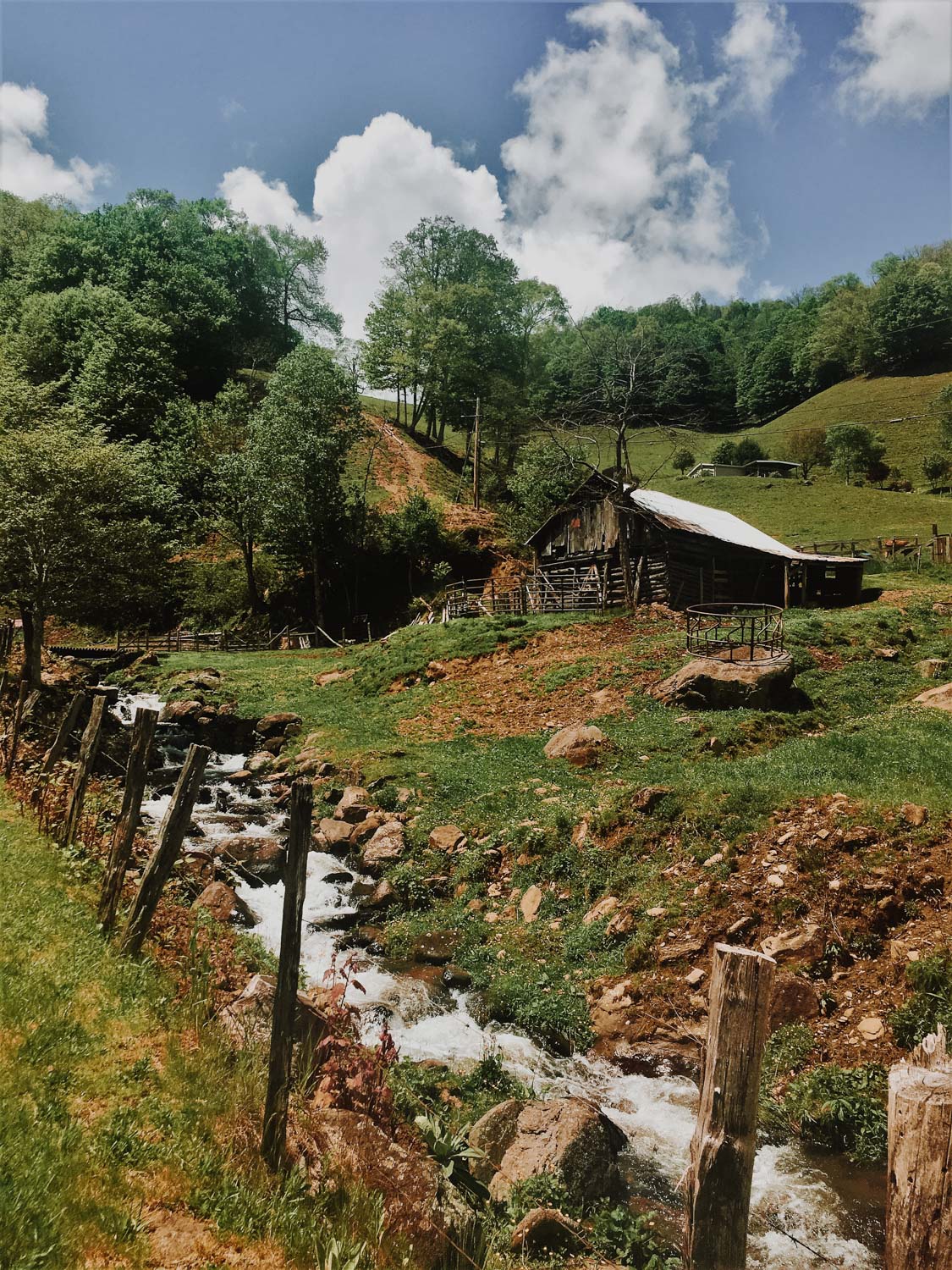 Snaking up through the river bed, through High Falls Road, Hog Pen Road and Red Hawk Road, a pine forest eventually takes over at around 4,000 feet. It leaves only an unmarked dirt footpath. There is no sign forward. No arrow. No direction. The way to the summit of Yellow is maintained only by the boots of those who have tread it for generations—nothing more and nothing less. The secret passage presses itself narrowly through a mossy cow gate guarded by a rusted lock. It gives way to a centuries-old field of boulders, protruding from the untouched moss like prehistoric bones.
Snaking up through the river bed, through High Falls Road, Hog Pen Road and Red Hawk Road, a pine forest eventually takes over at around 4,000 feet. It leaves only an unmarked dirt footpath. There is no sign forward. No arrow. No direction. The way to the summit of Yellow is maintained only by the boots of those who have tread it for generations—nothing more and nothing less. The secret passage presses itself narrowly through a mossy cow gate guarded by a rusted lock. It gives way to a centuries-old field of boulders, protruding from the untouched moss like prehistoric bones.
At over 5,000 feet, the boulders cease and the trees open to the liberation of a fully panoramic bald. Tall grass dances in the breeze over ancient stone. Wildflowers blush pink next to the muscular rocky slopes. On the horizon, the peaks of purple-blue mountains reach up to paint a canvas against the pale blue sky.
Looking around, Yellow Mountain is nestled in the infinite embrace of its family: Roan Mountain to the west, Table Top to the South, Mount Mitchell past Table Top, and Grandfather looking on proudly from the East. Its unforgiving slopes and unapologetic beauty have stolen the adventurous hearts of the Cherokee, English frontiersmen, the Scotts-Irish, and my own Grandparents. It is in the heart of Appalachia, the U.S.’s oldest mountain range. It is as unchanging as the glaciers that once sculpted its surface, and it is home.
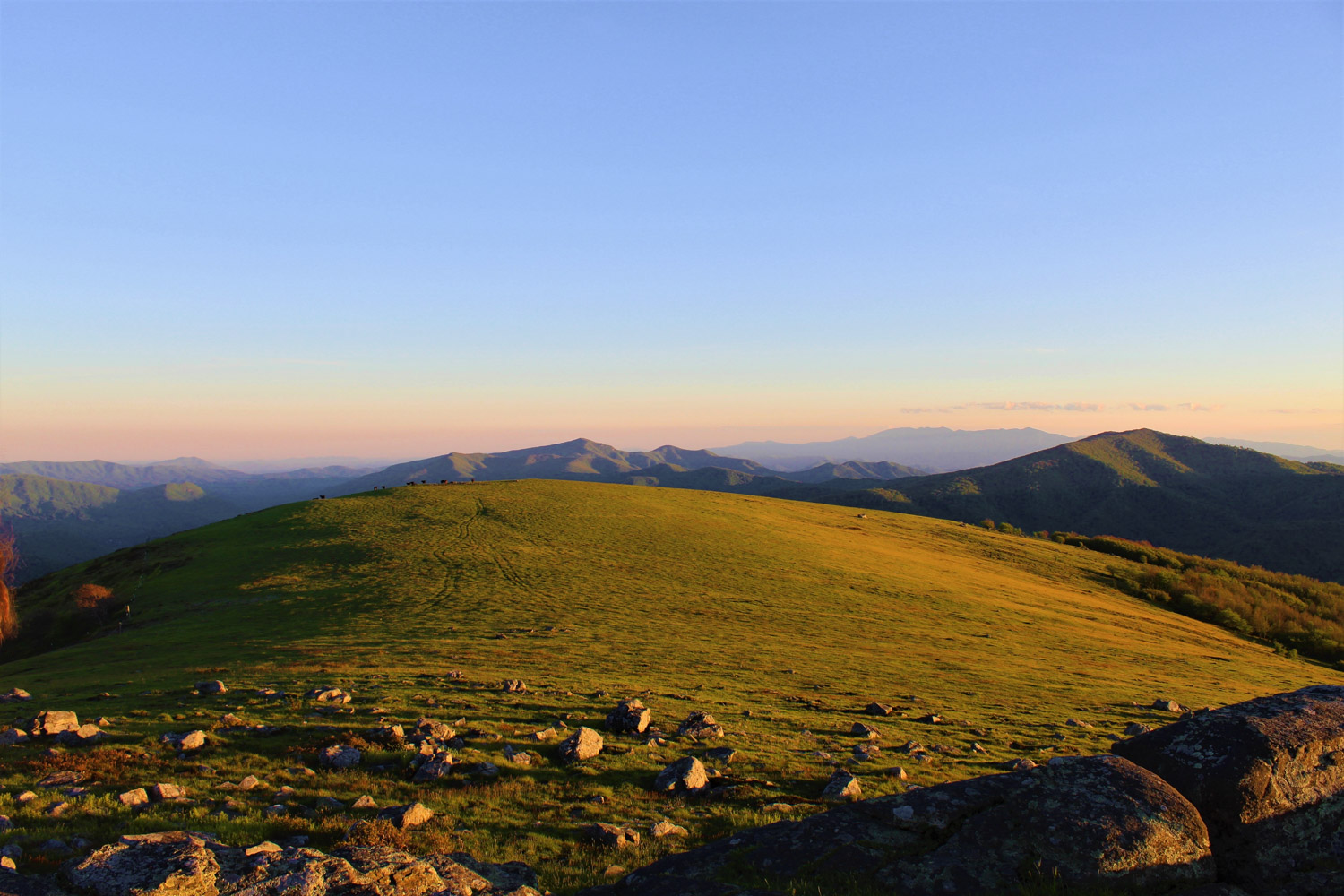
The view from Yellow Mountain Bald Summit looking south.
I first went up Yellow in the arms of my mom. As a child I scraped my knees on every boulder racing to the summit. As an adult my bruised legs carry me up 1,250 feet at a sprint. On Yellow, I can mark the passage of time only in the changing details of the mountain face. In 20 years, the bench that looks southward from the cliffs of the summit has been gently worn by the Eastern winds crashing over from Tennessee, by the claws of hunting dogs, and by the thighs of young lovers watching the setting sun.
On Yellow, I can mark the passage of time only in the changing details of the mountain face.
Only someone who knew the crispness of the chisel that carved that bench can still make sense of the message set in its base: “The Lord is My Shepherd.” The clarity of the words has dulled with time. To the Northeast, a red barn is tucked under Roan Mountain along the Over Mountain Men trail. Once trodden by Patriots in the 1780s, the barn’s military posture has succumbed to the pull of gravity. It now leans at an angle too dangerous to enter, and the slope of the mountain is its cane.
Only someone who grew up sleeping away summer afternoons in that barn knows what childhood scribbles lie in its rafters and can wonder as to how their humorous details have faded. Back down toward Toe River, two young pups peep out from under the hood of a tipi. They have all the playfulness of the dogs that lived there 20 years ago. And only someone who knows Yellow knows what untold story darkens their sparkling eyes. They have a sense, but they have not been told that their owner passed away a year ago, leaving them orphaned on wildflower slopes. Nature’s time passes in the gentle changes of the years and in the beat of my own heart.
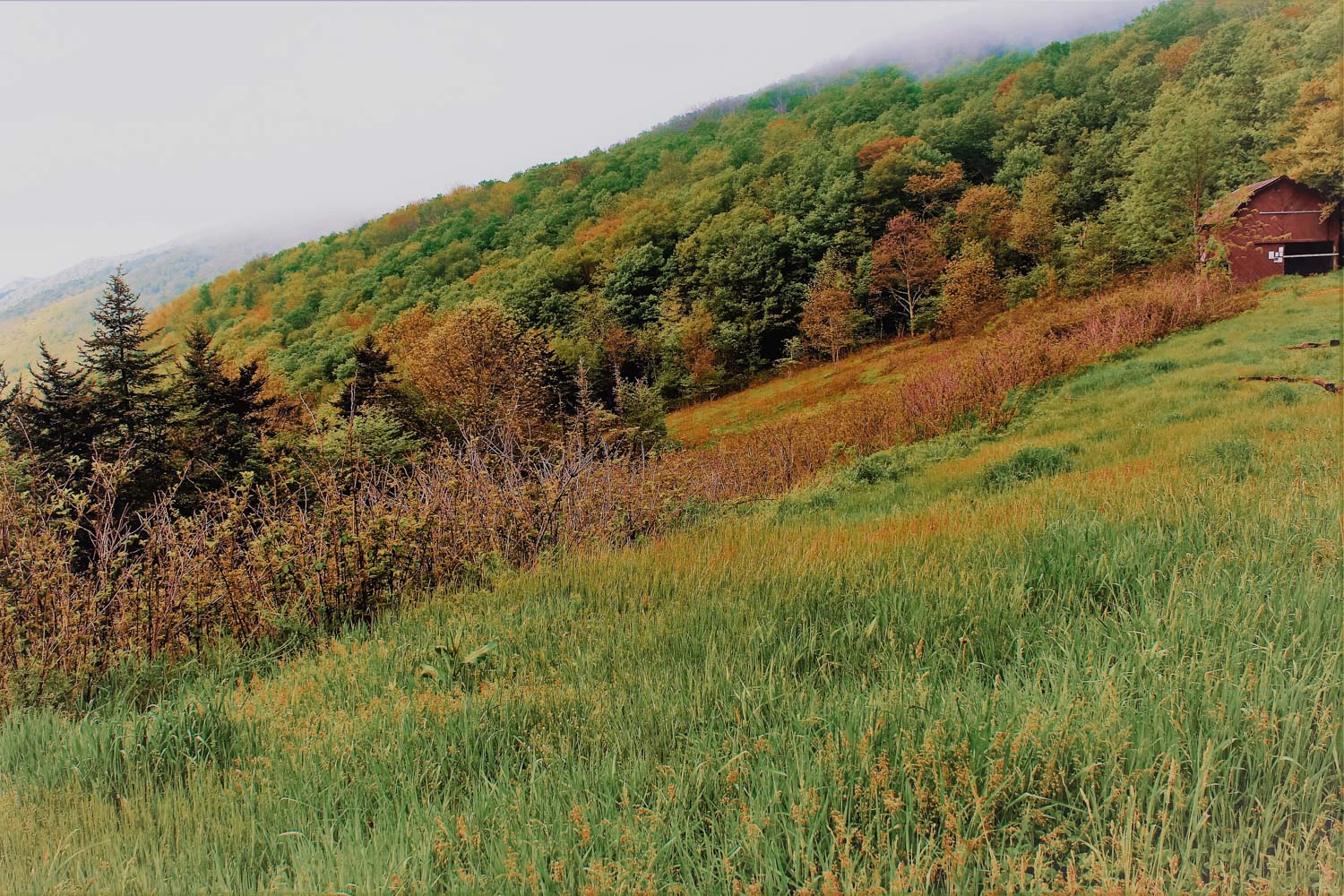
When I moved to New York City four years ago, the first thing that struck me was the difference in the strike of time. City time has an intentional rhythm powered by the strut of wall street businessmen, the frantic flight of cheerful baristas carrying overflowing coffee, and the furious bells of grub hub cyclists speeding down 5th avenue.
I can stand on the Corner of Saint Marks and Tompkins any night, and it will feel different than the evening before: a new riff of Autumn Leaves wailing out of the saxophonist, a new bagel flavor advertised in the window of Tompkins square bagel shop, and a new greying gentleman holding out his hand to ask if I can spare a new quarter. The only thing that is the same, is the simple mountain smile on my lips. For a long time, I thought the quickness of the city matched my young soul in a way the mountain never had and never could.
When COVID-19 hit, the city changed fast. The beat of jazz that seeps up from Smalls, Zinc, and Fat Cat, went on life support. Then stopped altogether. The fizzling buzz of alcohol induced cheer brewing inside Josie’s, Miss Lily’s, and McSorley’s was dulled and then drained.
When I went up Yellow last Spring, I expected it to be different. Everything else in the world was.
I looked for familiarity in all the wrong places. I longed to lay under the piano in Washington Square park and feel Glass’s melodies pound through my body. But I found myself alone with Glass in my shoe box-sized apartment. I longed to hear new stories from new acquaintances in village dive bars, but found myself sloshing through old memories with cheap bourbon. My friends, lovers, career, and inspirations dulled. The path forward was winding and dissolving beneath my feet as I tried to walk. And, worst of all, the rushed, catastrophic, but familiar rhythm of New York left no note about when it may return to serenade my days once more. I needed familiarity. I needed certainty. I needed home.
When I went up Yellow last Spring, I expected it to be different. Everything else in the world was. But the mule nodded its big eyes, and the cattle plodded their steady hooves. I found the summit of Yellow where I left it, nestled in the embrace of Mitchell, Roan, and Grandfather. And, I found myself nestled in the embrace of mom’s joy, dad’s humor, and my brothers’ unaltered companionship. The rapid changes of the world below did not trek up the mountain road to Yellow. The changes, the uncertainty, and the fear of COVID-19 flowed towards Asheville on the white-water currents of the Old Toe River. COVID-19 was thousands of feet beneath us and thousands of thoughts away.
But it didn’t stay away for long because we soon discovered that COVID-19 came home with me. My muscles became numb, weak, and ripping. Mucus filled me with uncertainty, but I knew exactly where I could find steadiness: the 1,250-foot run to Yellow’s summit.
I ran through the heat burning in my lungs, because the fire fueled my legs. I ran through the blood spurting out of my nose and throat, spitting it onto the path before me. The harder I coughed the faster my footfalls. I was addicted to the intimate certainty of the path. I knew where I was going, and I knew it was somewhere I loved. COVID-19 could not steal one second of that certainty from my life.
Unfortunately, COVID-19 has its own certainty. On the 8th day of my illness, at 3 am, I was pressing my half-naked body into the cold tile of the bathroom floor, heaving into an inhaler. I was burning from the inside out. Tears melting out of my eyes. Mom was nervously dabbing sweat off my forehead with an ice-soaked rag. She wondered out loud to Dad where the nearest hospital was—2 hours at least. I was cursing myself for putting them at risk. Trying to get them away from me, my efforts translated only into unpredictable bodily spasms—nothing more.
All I could do was crawl through the hall to my bed and lie there, assuring Mom she could sleep. That night, I didn’t move any part of my body except the purposeful movement of my lungs. I did not blink. I did not itch. I just breathed.
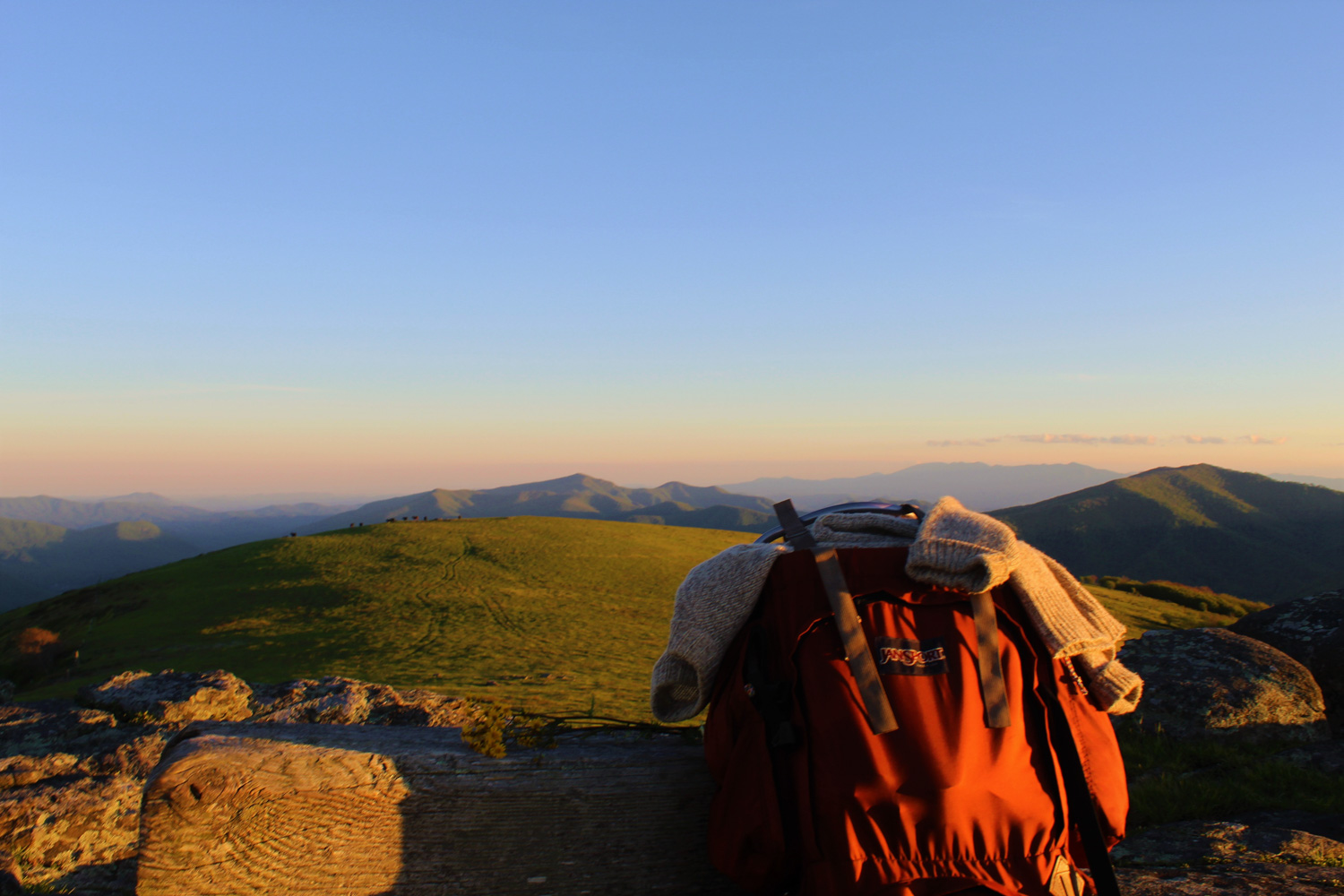
At 6 am, the sunrise warmed my eyelids open. The sky over Grandfather Mountain tinted yellow, then orange, and then blue. I could feel the bed and the mountain below holding my body up as tribute for the new day. I reached my arm down and shoved my legs over the side of the bed. I fell squarely on my face, knocking into the bedside barrel. My cheek was flesh with the carpet, and I looked up sideways out my window to Grandfather. I lunged for my sneakers. I pulled them over my feet and stood up on my wobbly legs. Looking squarely at the mountain, I breathed. In. Out. Again. In. Out. Inhaler. In. Out.
I started toward the summit. The fresh air blew my lungs wide open. The numbness of my body ensured that I couldn’t feel myself burning. At the summit, I collapsed. I pressed myself desperately into the cold rocks. Yellow held me there in the embrace that only the oldest of friends can manage. Its rigid roughness went right to my bones. It reminded me that its steadiness would always be there when I needed it, but that the rest of my journey lay yet ahead, outside of its comforting arms. With the summit’s loving push, gravity pulled my heavy legs home, back down the path.
I ran to the summit every morning of my sickness, through COVID’s danger to the safety of health that secured myself and my family. COVID-19 put me, and so many people I know, in a state of present and future dread. The mountains drew me abruptly into the moments of clarity right before my eyes.
From spring to summer to fall, I ran miles of dirt trails from Big Yellow to Roan with ever present eyes of an eagle. One misstep would land my foot on top of a copperhead or in a ditch with a twisted ankle. I solo backpacked from North Carolina to Erwin TN. My mind thought no further ahead than when the next water source would be, lest I end up dehydrated on the ridgeline.
There is a reason people say that nature grounds us, and there’s a reason the bottoms of our shoes are called soles. Nature’s thick roots run right through our aches and pains, pulling us down to earth.
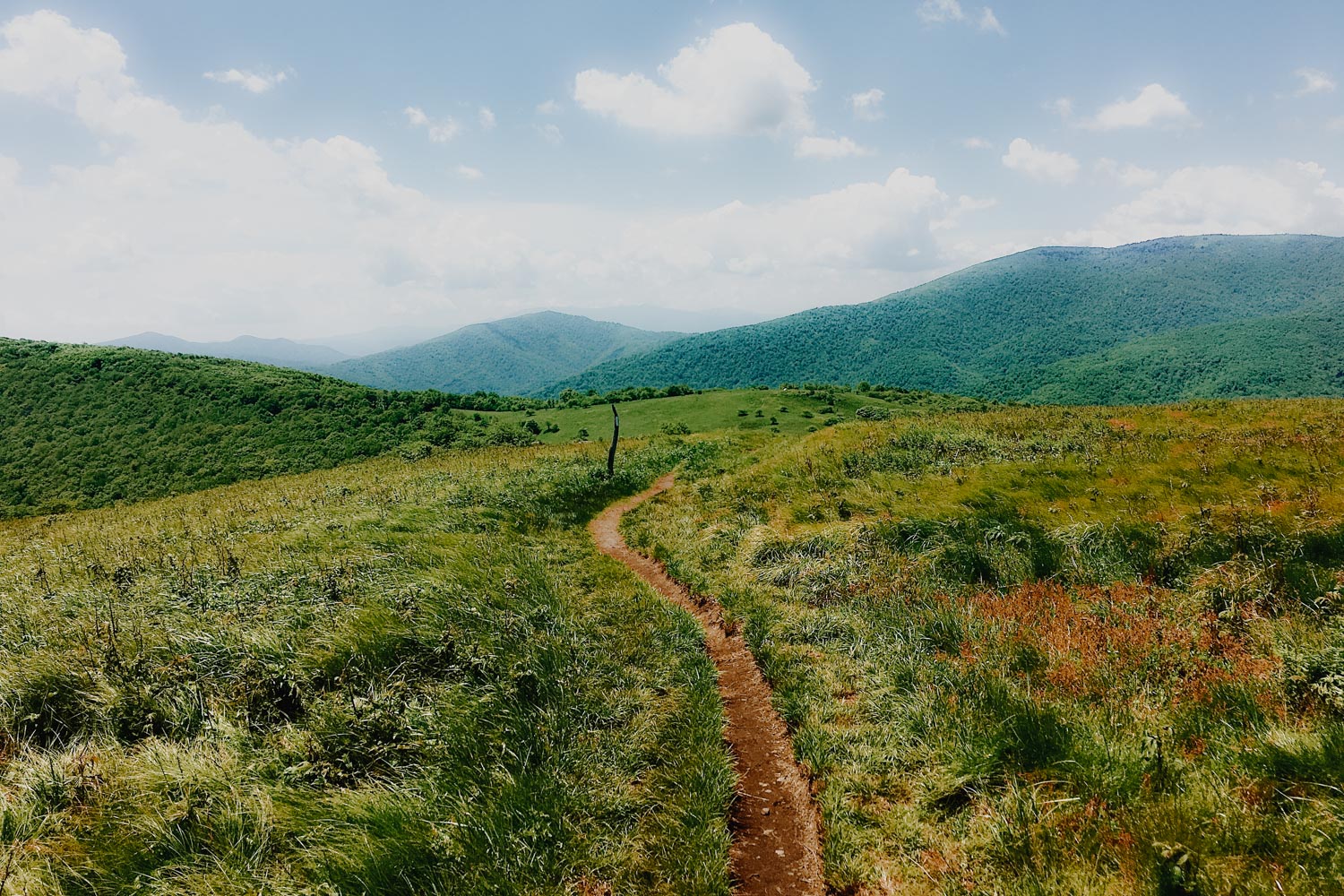
Section of the Appalachian Trail between Roan Mountain and Big Hump Mountain.
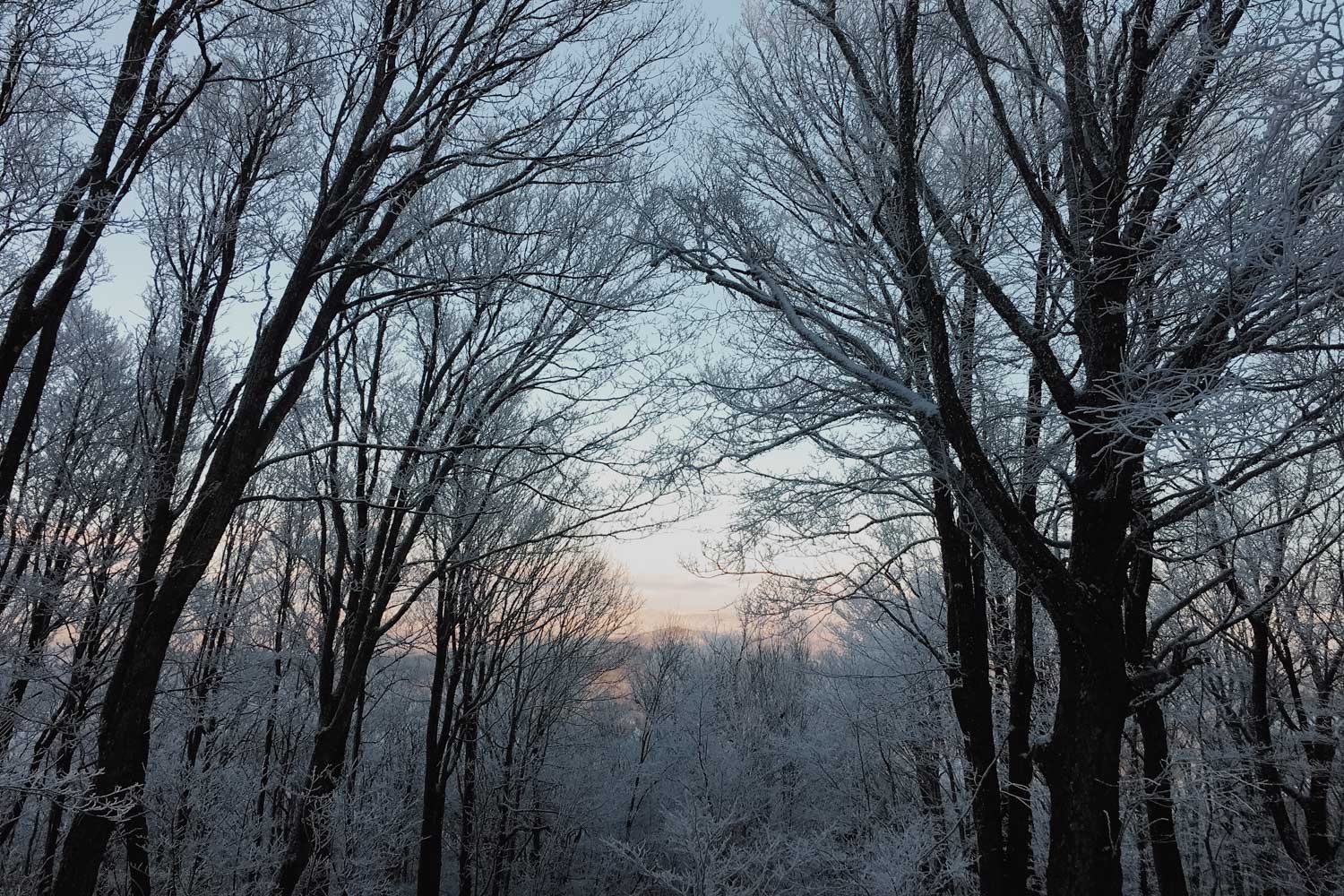
Seasons change, but the skyline remains familiar.
When winter came in December, it was only two months away from the year anniversary of COVID-19. The path up Yellow was iced over and the snow was up to my shins. With each step, the ice shifted, my feet slid, and I had to pause in midair, jerking my arms at odd angles to catch myself. I was furious. The snow seeped to my toes through the mouse holes in sneakers, numbing off the entirety of my feet. Halfway up, a thick root caught hold of me and yanked me down to the ground, gashing my knee wide open. My warm blood flowed out, coloring the white snow red. When I reached the summit, I spun in crazed circles, searching the horizon for Roan, Mitchell, and Grandfather. But, in their stead, was a deepening winter fog. Sleet flew down into my mouth, cut my eyes, and stung my fresh wound. All I could see was the ground beneath my feet. I wiggled my frozen toes. I pressed snow into my bleeding knee. I laughed. I smiled into the fog. I was aching. I was numb. I was bleeding. I was alive.
That week, I ran up Yellow for five days straight in the ice. I ran after the setting sun drew shadows over any oak I could have found familiar. I was determined to match Yellow’s former steadiness with my own unchanging dedication. By January 1st, the snow melted, and the path had all the clarity of summer.
With the “return to normal” I am back in NYC now. I still miss the rhythmic beat of jazz, the bubbling fizz of bars, and the new expressions of acquaintances. But there is a certainty within me of my own path, my own steadiness, and my own consistency.
I love the path to Yellow because it is known to me. The intimacy is in the details and secrets that only I know.
Growing up, my brothers and I would lace up our muddy boots, cross the front porch, and strike out together for a trek. Someone would get a mischievous look and say, “Let’s Reconnoiter!” Launching off the beaten paths, we would trespass through Christmas tree farms and hunting land. We would get chased off by park rangers or hunters on four wheelers. And in our getting lost, we would discover new grassy patches in which to laze and new boulders upon which to climb. We had all the excitement of adventure, the nervousness of finding home, and the familiarity of companionship. By getting lost, we refined our own sense of direction and purpose.
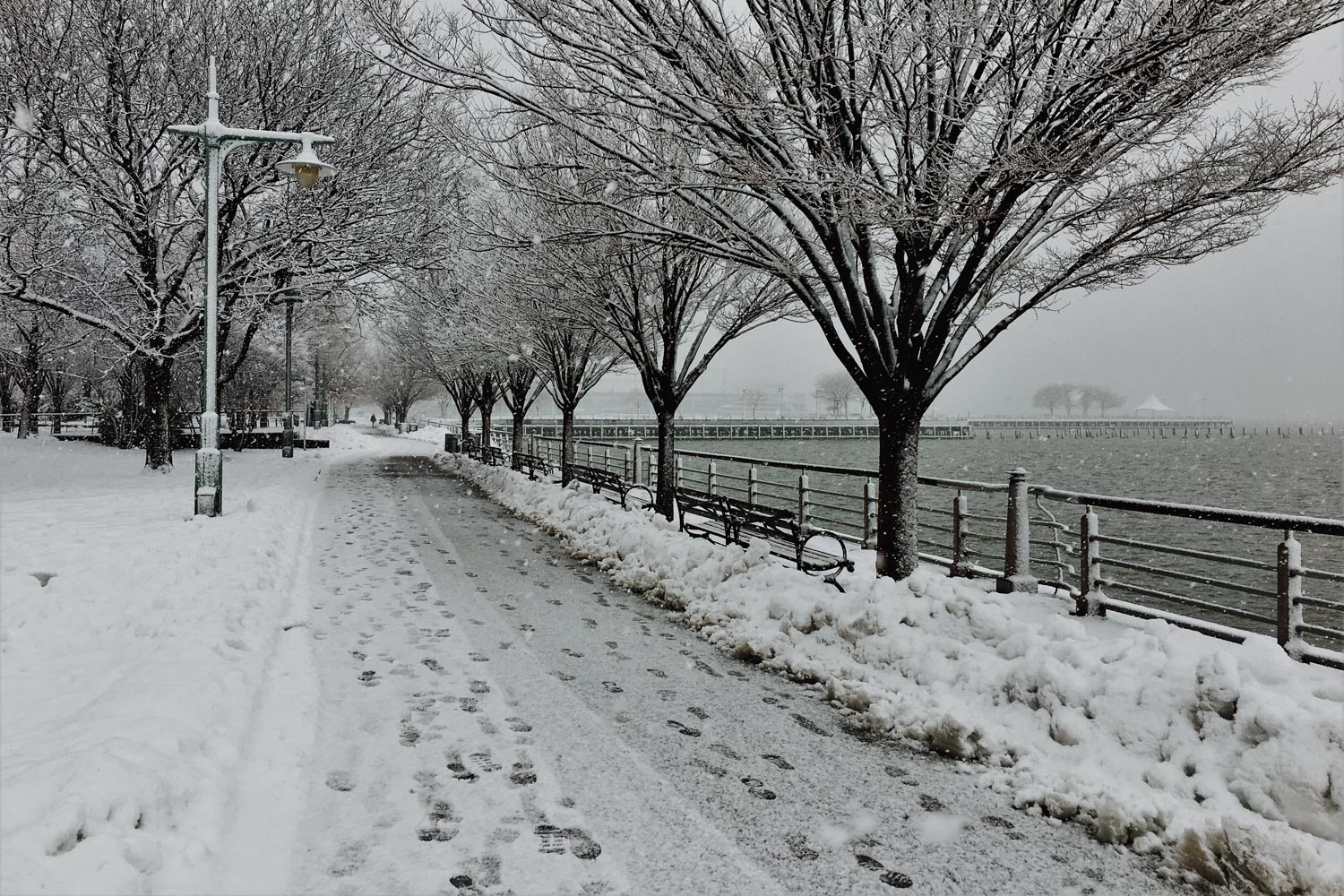
I love the path to Yellow because it is known to me. The intimacy is in the details and secrets that only I know. It is in the eyes of the stubborn mule, the message on the summit’s bench, and the playfulness of the two orphaned pups. But, my love of getting lost is something produced for the love of the unknown. The intimacy is in the knowledge I have of myself. It is in my soul’s determination to forge a new path on my own two legs, with my own steadiness born from the steadiness of Yellow Mountain.
Striking out to run to the Southern tip of Manhattan in this February’s blizzard, I smile with all the certainty of a rising, Yellow sun. I test the ice beneath my feet over the bridge to the East River. I feel the rhythm of my own heart beating as I fly past the shuddered Jazz clubs that used to supply my melodies. I plunge into the fog before my eyes with unending footfalls. While my path ahead has never been more uncertain, it has never been more my own.
Jessie Lynn Wall was born and raised in Southern Appalachia, but she is currently based in New York City. An avid trail runner, marathon addict, distance cycler, tea guzzler, and book junky, she treats every day like an adventure.
I came across this piece while researching my family who were enumerated on Yellow Mountain in the 1860 census. This piece gave me a taste of where my family came from. I love the way the you have written about your experience with Covid and returning home and the timeless ness of the mountain. My Denney roots are in Yellow Mountain and Toe River. My Freeman roots are from Grassy Creek. I wish I could seen these places before the storms. I don’t know if I have any living relatives in the area, but I pray everyone is safe.